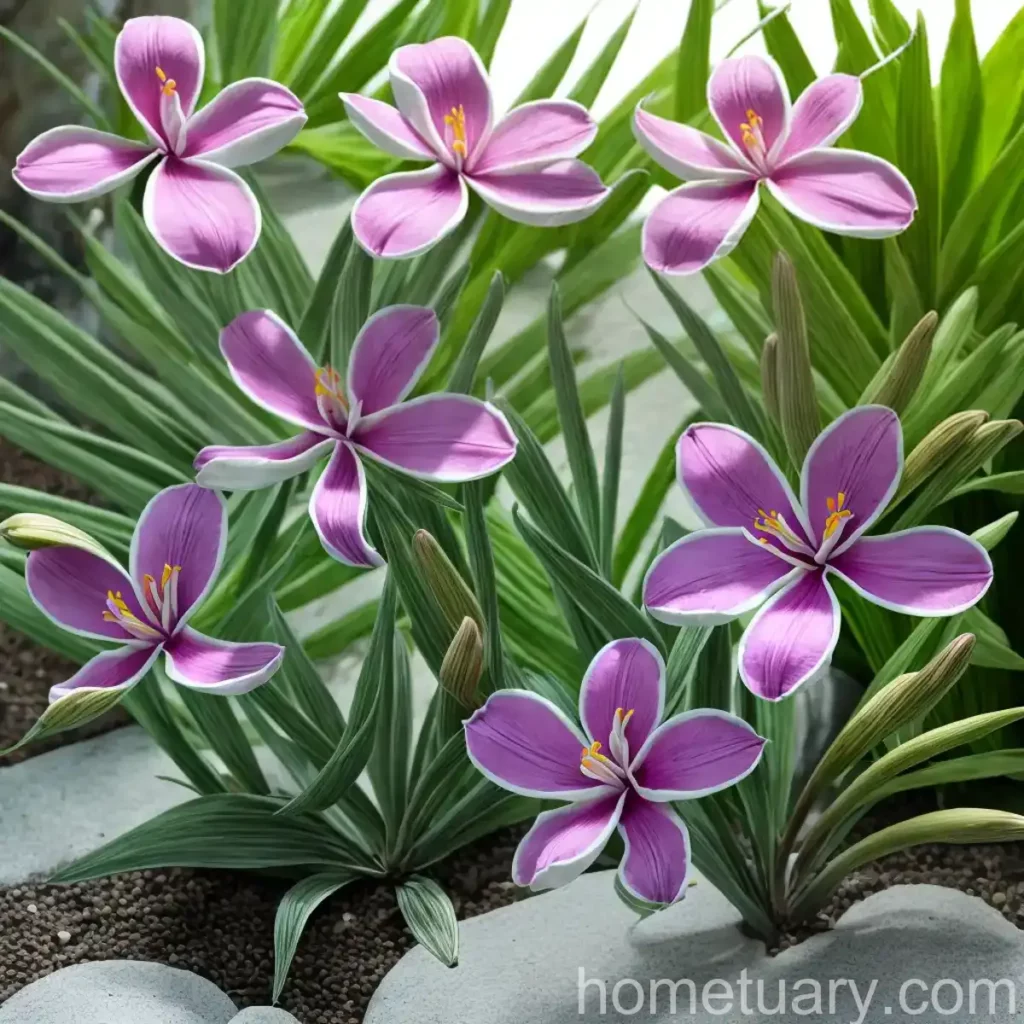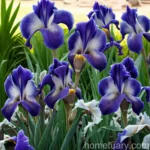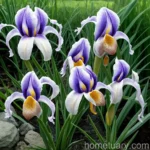Ixia (Ixia maculata) – A Comprehensive Guide
Ixia is a genus of African plants in the Iridaceae family. The name is derived from the Greek word for “bird” due to the long, slender flower spathes resembling a bird’s bill. With around 85 species, Ixia is native to South Africa, where it grows in a variety of habitats, from sandy and rocky slopes to marshy areas.
In this comprehensive guide, we will explore all aspects of Ixia (Ixia maculata), including its cultivation, care, uses, and maintenance. Whether you are a seasoned gardener or a novice enthusiast, this guide aims to provide you with the knowledge and tips needed to successfully grow and appreciate the beauty of Ixia maculata.
Key Takeaways – Ixia (Ixia maculata)
Before delving into the specifics of Ixia maculata, let’s summarize the key takeaways related to its cultivation and care:
- Scientific Name: Ixia maculata
- Family: Iridaceae
- Native Habitat: South Africa
- Cultural Uses: Ornamental, cut flowers
- Water Needs: Moderate
- Sunlight Requirements: Full sun to partial shade
- Soil Type: Well-draining, sandy soil
- Fertilization: Moderate feeding during the growing season
- Pruning: Deadhead spent blooms to encourage new growth
- Propagation: Division of bulbs or seeds
- Common Pests: Aphids, thrips
- Common Diseases: Fusarium wilt, rust
- Optimal USDA Hardiness Zones: 8-10
Now, let’s delve into each of these aspects in detail to understand how to best care for Ixia maculata.
What is Ixia (Ixia maculata)?
Ixia maculata is a charming bulbous plant known for its delicate, star-shaped flowers and grass-like foliage. Commonly referred to as the “spotted African corn lily,” this species is a popular choice for gardeners looking to add a touch of elegance and vibrancy to their outdoor spaces. The flowers of Ixia maculata are typically held on wiry stems and come in shades of pink, red, and white, often featuring speckles or spots on the petals, hence the name “maculata,” which means spotted.
Culture
When it comes to cultural significance, Ixia maculata holds a special place in South African flora and has also gained popularity in horticulture and floristry. Its alluring blooms and gracefully arching foliage make it a sought-after choice for garden borders, rockeries, and even floral arrangements.
Uses
Ixia maculata is primarily grown for its ornamental value. The delicate flowers lend themselves well to both garden landscapes and floral bouquets. The vibrant colors and dainty appearance of the blooms make Ixia maculata a popular addition to cut flower gardens and mixed perennial borders.
Water
Proper watering is crucial for the health and vigor of Ixia maculata. While it prefers moderate moisture during the growing season, the bulbs should be allowed to dry out between waterings to prevent rot. During periods of dormancy, it is essential to reduce watering to avoid waterlogging the soil and causing bulb damage.
Sunlight
Ixia maculata thrives in full sun to partial shade. Providing adequate sunlight promotes robust growth and ensures prolific flowering. In regions with scorching summers, partial shade during the hottest part of the day can prevent heat stress and maintain the quality of the blooms.
Fertilizer
A balanced fertilizer application during the growing season supports the development of healthy foliage and abundant flowers. However, excessive fertilization can lead to lush growth at the expense of flowering. It is advisable to follow a dilute feeding regime to provide essential nutrients without overwhelming the plant.
Soil
Ixia maculata flourishes in well-draining, sandy soil. The soil should be loose and friable to allow the bulbs to establish and expand. Incorporating organic matter can improve soil structure and fertility, enhancing the overall growing conditions for Ixia maculata.
Pruning
Deadheading spent flowers not only maintains the aesthetic appeal of Ixia maculata but also encourages the plant to produce new blooms. The timely removal of faded flowers prevents seed formation and redirects the plant’s energy into vegetative growth and flower production.
Propagation
Ixia maculata can be propagated through bulb division or seeds. Dividing mature clumps of bulbs during the dormant season promotes increased flowering and the expansion of plantings. Collecting and sowing seeds can also be a rewarding way to propagate new plants, albeit with a longer timeframe for mature flowering.
Container Popularity
The compact size and elegant demeanor of Ixia maculata make it a desirable choice for container gardening. Whether grown in individual pots or mixed containers, the charming blooms and slender foliage offer an enchanting presence that adds a touch of grace to patios, balconies, and outdoor living spaces.
Container Common Diseases
Plant diseases, such as Fusarium wilt and rust, can still affect Ixia maculata when grown in containers. Proper sanitation, well-draining soil, and good air circulation are essential for maintaining a healthy growing environment.
Disease Diagnosis
- Fusarium Wilt: Symptoms include wilting, yellowing leaves, and stunted growth. Infected plants may exhibit vascular discoloration.
- Rust: Characterized by orange, brown, or yellowish circular spots on the leaves. Severe infections can lead to defoliation and reduced vigor.
Common Pests
Aphids and thrips are common pests that can target Ixia maculata, feeding on plant sap and causing damage to foliage and flowers. Regular monitoring and prompt intervention can help prevent pest infestations from escalating.
Botanist’s Tips
- Well-Draining Soil: Ensure that the planting site provides adequate drainage to prevent bulb rot and waterlogged conditions.
- Mulching: Applying a thin layer of mulch helps conserve soil moisture and moderates temperature fluctuations.
- Winter Protection: In regions with cold winters, provide a layer of mulch or a protective covering to insulate the bulbs from freezing temperatures.
- Companion Planting: Pair Ixia maculata with low-growing companions, such as sedums or dianthus, to create visually appealing plant combinations in garden beds or containers.
Fun Facts
- Ixia maculata is a favorite among pollinators, attracting bees, butterflies, and other beneficial insects to the garden.
- The spotted petals of Ixia maculata flowers make each bloom unique and visually captivating.
- In some cultures, Ixia maculata is associated with symbolism and may hold special significance in traditional customs and beliefs.
Links to External Resources
For more information on Ixia maculata and its cultivation, care, and landscaping potential, consider exploring the following resources:
- South African National Biodiversity Institute
- The American Iris Society
- Royal Horticultural Society
- North American Rock Garden Society
- Botanical Society of South Africa
Conclusion
Ixia maculata, with its enchanting flowers and graceful appearance, offers a delightful addition to gardens, landscapes, and floral arrangements. Understanding its cultural significance, optimal growing conditions, and maintenance requirements is key to ensuring the successful cultivation of this charming species. By incorporating the tips and insights provided in this comprehensive guide, you can embark on a rewarding journey of growing and appreciating the beauty of Ixia maculata in your outdoor spaces.
Whether you are drawn to its ornamental value, its role in attracting pollinators, or its historical and cultural significance, Ixia maculata has much to offer to both enthusiastic gardeners and those seeking to deepen their appreciation of these captivating plants. With the right care and attention, Ixia maculata can flourish and enchant with its alluring presence and delicate blooms.
Remember to adjust the care of Ixia maculata based on your specific growing conditions and regional climate to ensure its optimal health and vitality. With its rich history, vibrant flowers, and potential as a captivating garden subject, Ixia maculata continues to inspire and fascinate plant enthusiasts around the world.















